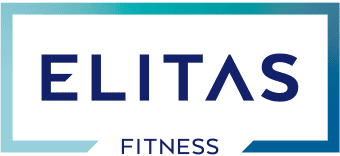How to lose body fat 1
Tip 1: Gaining or maintaining muscle tissue is imperative for long term fat loss and optimal body composition.
Any kind of muscle loss as a result of inadequate calories, improper training or simply ageing, will lead to a decline in metabolic rate which can slow, halt and even reverse fat loss. If you are losing strength and losing muscle then you will ultimately fail.
Let’s take 2 people:
Person A:
Exercises 3 times per week- Aerobic training- running, swimming and cycling only (burns 600kcal per session).
If this person were to exercise 3 times a week every single week of the year this would total 93,600kcal total expenditure.
Person B:
Exercises 3 times per week – Specific and structured resistance based training (not the stuff you see in your average commercial gym) and burns 450kcal per session- note that this is 150kcal less than Person B).
If this person were to exercise 3 times a week every single week of the year this would total 70,200kcal. This in fairness is 23,400kcal less than person A.
As a result of this training let’s assume this individual was able to gain 10lbs of muscle which would not be achievable with an aerobic based training programme. It has been estimated that an extra 1lb of muscle will burn an additional 50kcal per day. If we take this to be true then after gaining this muscle metabolic output would increase by 182,500kcal burnt per year!
Let’s recap:
Person A: Burns 93,600kcal a year. Aerobic training will burn body fat and is a fairly effective means to see short term weight loss. This type of training unfortunately results in very little change to resting metabolic rate. Aerobic training is also statistically more likely to result in an injury, ranging from minor soft tissue inflammation to more serious injuries. It is also more difficult to work around an injury when performing aerobic exercise (running, cycling, rowing etc.) than resistance training. Statistically a large portion of this person’s training time could possibly be hindered by injury which would reduce the total calorie expenditure.
Person B: Burns 252,700kcal a year and burns 150kcal less per workout. This person is able to burn almost 3 times as much energy over the course of a year and will have an improved body composition. Correctly structured resistance training is statistically the least likely sport to cause injury with rates as low as 5% whereas running holds an injury risk of over 30%. 10lbs of muscle mass sounds a lot but subsequent losses in body fat, which is a far less dense tissue, would result in a slimmer, firmer physique regardless of gender.
Summary: If you have read our previous posts or have been following us for a while you will appreciate that fat loss is a far more complex system than a simple calories in, calories out model. As you can see from this simple mathematical breakdown, the odds weigh heavily in favour of resistance training. This is not to say that resistance training is the only way to train as aerobic training can be extremely effective when combined with a good resistance programme. The take home message? Building muscle mass, or at least maintaining it, will result in a far greater chance of success! The traditional aerobic exercise model of training for fat loss is outdated.
